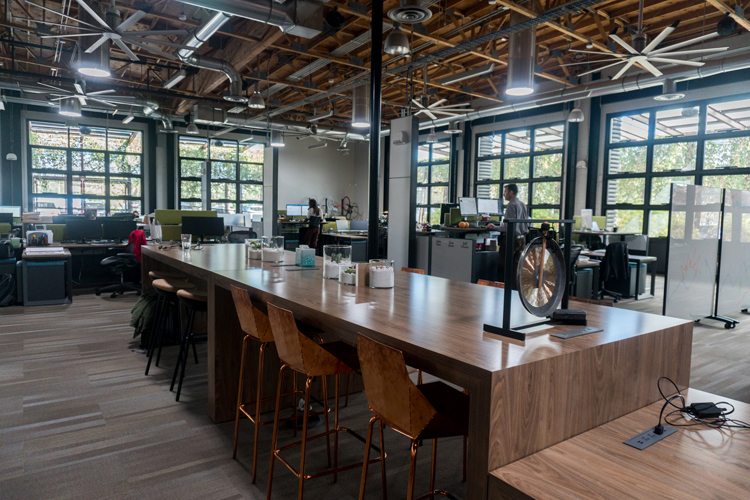It’s not easy to conserve energy use when typical summer days in Phoenix top 100 degrees.
But the International Living Future Institute, a nonprofit that challenges communities to build sustainable environments, has certified DPR Construction’s Phoenix headquarters as a net zero energy building, the first building in Arizona to earn the distinction from the group.
“Net zero” means the total amount of energy used by the building roughly equals the amount of renewable energy the building creates.
The institute described the 16,500-square foot building as a “great example of what is possible in our extreme climate,” according to the group.
To achieve certification, the group conducts strenuous inspections of buildings to ensure they produce energy and meet the institute’s performance requirements.
Leaders with DPR Construction said they extended the life of the building – a former adult toy shop near 44th and Van Buren streets – by an additional 20 years.
Energy-producing buildings could be the future in Arizona and across the country because of the environmental and economic benefits, said Premnath Sundharam, the global sustainability leader and architect for DLR Group.
“There is an increasing cost of electricity and energy, so there is more need for zero net energy in the coming years … certainly (it) is a trend nationally,” Sundharam said.
Residential and commercial buildings consume about 40 percent of the energy used in the United States, according to the U.S. Energy Information Administration.
One study indicated there were 67 commercial buildings verified as zero net energy in the U.S. and Canada in 2017, and there were 415 in construction or in the evaluation process, according to the New Buildings Institute. That’s a 26 percent increase in verified buildings in a year, according to the Living Building Institute.
Although there’s only two net zero buildings in Arizona certified by the International Living Future Institute, the Southwest Energy Efficiency Projectlists three certified or verified buildings.
DPR Construction uses innovative air conditioning and lighting systems. It has 87 windows that open automatically when outdoor temperatures are pleasant.
It also has four evaporative cooling structures with misters at the top of the 30-inch pipes to cool the air that enters the office space. A 87-foot solar chimney creates a convection current, which forces the hot air out of the building while simultaneously drawing cooler air indoors.
And 12 gigantic fans throughout the building stimulate air flow and maintain indoor temperatures.
The building generally doesn’t use artificial light during the day, relying on natural sunlight instead.
Company officials said the small amount of energy DPR uses is offset by solar panels that double as a shade structure in the office’s parking lot.
“Zero net energy buildings are designed with people at the center of the design, and it’s important that they have better daylight, better acoustics and better indoor comfort so that we’re not just saving energy … but we’re also providing a great place to work and a great place to live,” Sundharam said.
The company monitors its daily power consumption and solar power production in real time using a dashboard system.
Company officials said they had to pay 25 to 30 percent more money in construction costs, but they believe they will recoup the investment within 10 years.




